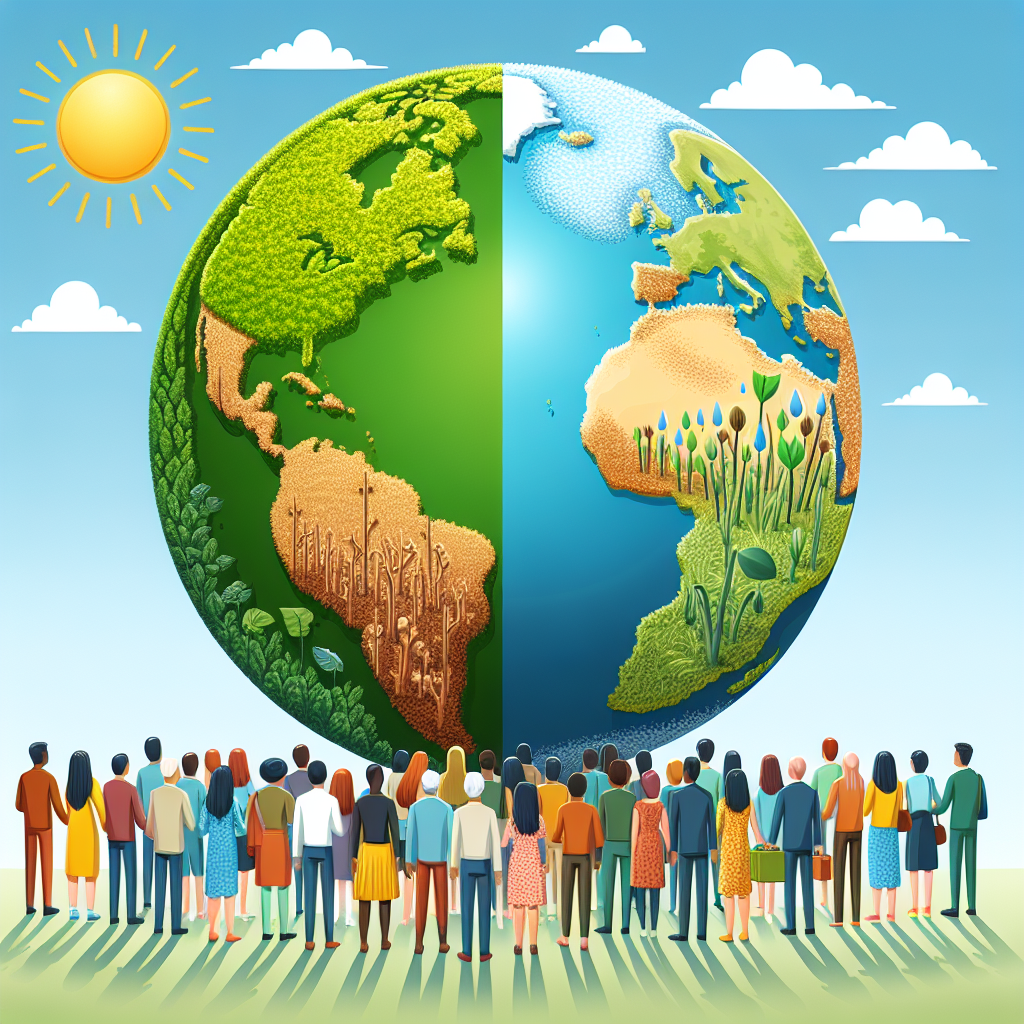Climate change is undeniably one of the most vital issues facing our globe today. With far-reaching effects that span across multiple sectors, no area is seemingly untouched, including the global population. This article will delve into the influence of climate change on the global population and explore various facets of this interaction, from exacerbating poverty to magnifying health risks.
The Relationship between Climate Change and Poverty
Severe weather events fortified by climate change, such as hurricanes, floods, and droughts, are likely to hit poor and developing regions harder. Individuals in these areas typically lack the financial resources and technological capabilities to effectively respond to these events, thereby exacerbating existing rates of poverty. This effect is especially pronounced in the global south, where a majority of the world’s poorest people live.
The Impact of Climate Change on Health
Changes in the global climate can also have significant effects on public health. For instance, the increase in temperatures contributes to a rise in the incidence and severity of heat-related illnesses and deaths. The World Health Organization (WHO) predicts that climate change could cause an additional 250,000 deaths per year between 2030 and 2050 due to heat stress, malnutrition, malaria, and diarrhoea alone.
Climate Change and Migration
Changes in the climate can also induce mass migration, often termed ‘climate refugees.’ The World Bank estimates that three regions (Latin America, sub-Saharan Africa, and Southeast Asia) will generate 143 million more climate migrants by 2050 because of climate change. This migration poses a serious challenge as it may lead to intricacies related to resource distribution, social cohesion, and political stability.
Food Security and Climate Change
Climate change effects extend to the world’s food system as well. Rising temperatures and changes in rainfall patterns impact crop yields, affecting both the quantity and quality of food produced. As a consequence, food security is threatened, particularly in regions already grappling with malnutrition and hunger.
The Climate-Population Feedback Loop
The relationship between climate change and the global population is not a one-way street. In turn, the global population can influence climate change. Population growth puts increased pressure on resources, leading to higher greenhouse gas emissions, which further intensify climate change effects. This creates a vicious cycle; the population is affected by climate change, which it also helps to exacerbate.
Conclusion
In summary, climate change significantly impacts the world’s population in a myriad of ways, from intensifying poverty to increasing health risks. The interplay between climate change and the global population has far-reaching implications, necessitating urgent action to mitigate these dire consequences. Effectively addressing climate change demands not only global cooperation but also a nuanced understanding of its relationship with the global population.
Frequently Asked Questions
- How does climate change impact poverty?
Climate change can exacerbate existing poverty rates by increasing the severity and frequency of extreme weather events, which particularly affect poor and developing regions incapable of effective response. - What is the effect of climate change on health?
In accordance with WHO, climate change is likely to increase the incidence of heat-related illnesses and deaths, malnutrition, malaria, and diarrhoea. - How does climate change influence migration trends?
Climate-induced environmental changes such as sea-level rise, droughts, and extreme weather events can lead to mass migration. These individuals, known as climate refugees, add to existing social, political, and resource distribution challenges. - What is the relationship between climate change and food security?
Climate change affects food production through its impacts on crop yields, threatening food security especially in regions that are already facing hunger and malnutrition. - What is the climate-population feedback loop?
This refers to the cycle where population growth intensifies climate change through higher greenhouse gas emissions, and in return, the population bears the detrimental impacts of climate change.

